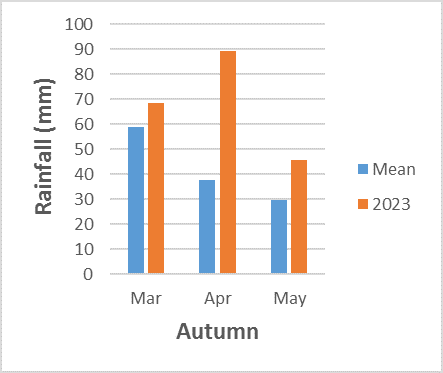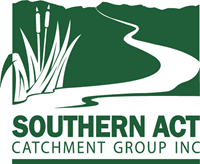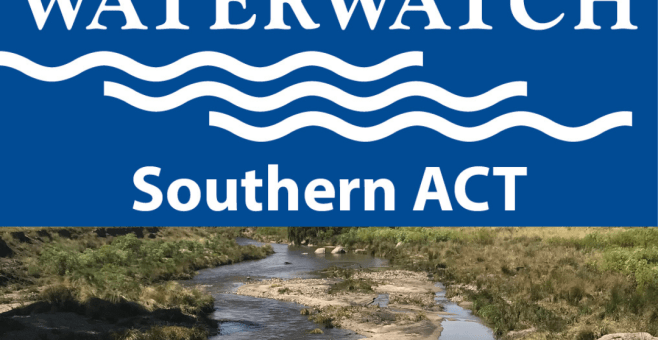The view from Coordinator’s desk

We launched the 2022 Catchment Health Indicators Program report on World Water day in March. If you have not had time to look at it yet head to this link .
Many good folk joined me to see what the year would bring for little water crawlies. Exposés of our findings are below.
Cheers, Martin Lind
Waterwatch Coordinator
Volunteer update
Newbies this season include Louis and Sam Autumn. (I noticed the appropriateness of their last name too) who have adopted the Murrumbidgee at Uriarra Crossing. Barbara Mackin retired from monitoring there last February after 8 solid years. Alannah Wood and Sabrina Doelle, ex Lake Tuggeranong College Sustainability Unit students, have joined Sharae Hurley to help at Point Hut Pond. A new team from the ANU headed up by Caitlin Horne and Sarah Davis took some the load of Richard Bland by taking on the Murrumbidgee at Pine Island. David Cahill retired from monitoring the Orroral River for us. He hadn’t been able to get to his sites for 6 months due the road closure.
Who are the big 3?



The most pollution sensitive waterbugs include the nymphs of stoneflies, mayflies and the larvae of caddisflies.
Together they are referred to as EPTs
(Ephemeroptera, Plecoptera, Trichoptera) after their taxonomic Orders.
When we find all 3 at a site it is an indication of good water quality and aquatic habitat.
Around the Rivers and Creeks

The Murrumbidgee river had a diverse waterbug population at Angle Crossing and Pine island but this shrank the further we went downstream. There were no stonefly nymphs but masses of water boatmen, a very tough water insect.
The Cotter river had lots of EPTs at Vanity’s Crossing reflecting the great water quality and habitiat. Below the big dam there were only a few stonefly nymphs and most of the bug population comprised of blackfly larvae that are only found in places with fast flowing water. The upper Cotter river, above Corin Dam was still inaccessible over autumn. At Paddy’s river all the EPTs were there but the catch mostly comprised of caddisfly larvae. Naas river has good diversity with hundreds of sensitive bugs, mostly mayfly nymphs, but no stoneflies. The Gudgenby river had EPTs and lot and lots of blackfly larvae reflecting the high flows of recent months.
Tuggeranong creek had the EPT gang at top lots of mayfly and blackfly. Down below the lake there were, masses of net weaving caddis, the only sensitive bug and masses of tough water boatmen
Up in Gibraltar creek there were lots of EPT including 10 families of caddisflies. This creek is often the jewel in the crown. Guises creek had a good number of mayfly and caddisfly along with lots of blackflies and water boatmen.
Around the Lakes and ponds

Blue green algal blooms hung around Lake Tuggeranong and Point Hut Ponds last autumn affecting sampling efforts. Lake Tuggeranong had good diversity this time but most it was mostly hundreds of water boatman. There were also a good of numbers of shrimp and snails. In the southern Wetlands was a great diversity again but low numbers. There were quite a few damselfly nymphs. At Isabella Pond there were masses of the pest mosquito fish, water boatmen and quite a few leeches. Point Hut Pond had lots of mosquito fish and water boatmen
Stranger Pond had good diversity with a fair spread over the different pollution tolerances. There were lots of damselfly and dragonfly nymphs. Kathner dam on Cooleman Ridge had good diversity but the numbers were mostly made up of water boatmen.
Around Tidbinbilla and Namadgi

Namadgi National Park creeks had masses of EPT bug with more diversity in the downstream parts than higher up, probably as a result of bugs being flushed downstream from all the rain. The Naas river in the national park had lots of very sensitive bugs along with freshwater sponges, something I rarely see.
Tidbinbilla Nature Reserve scored the highest diversity of all. But this was mostly tough bugs in the wetlands. Caught were 13 orders including pea clams and gordian worms. The Orroral river was inaccessible over autumn.
Around the schools
This Autumn; Southern Waterwatch hosted a series of sessions with Trinity Christian School’s Yr11 Biology class. I went with the Brindabella Venturers on their autumn pilgrimage to Namadgi NP to check on waterbugs. I began 2 exciting research projects with young scientists as part of the ACT Science Mentors program. The Waterwatch team at Caroline Chisholm High School passed their QA/QC. I helped the Visitor Assist Program team at Tidbinbilla NR with another ‘World of Waterbugs’ day. Harrison Primary School investigated the waterbugs at their local pond. The ACT Home School association did a riparian and water quality session at a Cooleman Ridge. With help of Jed and Yolandi, John Paul College held a 2 day program at the Cotter. Yolandi and I helped Jed Pearson at Narrabundah College.



